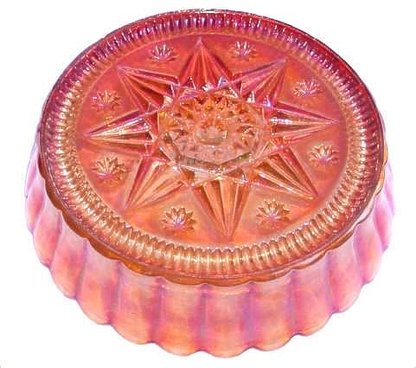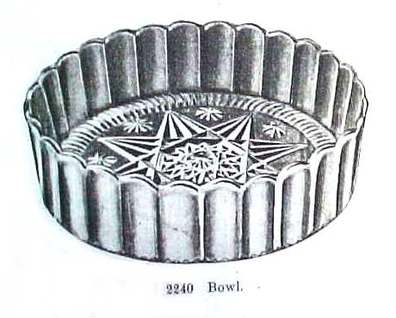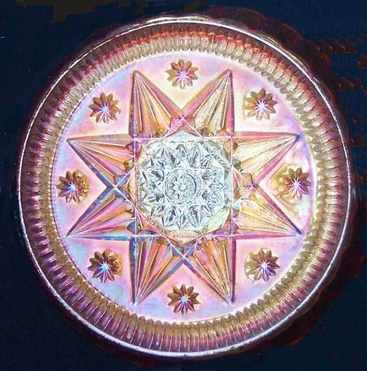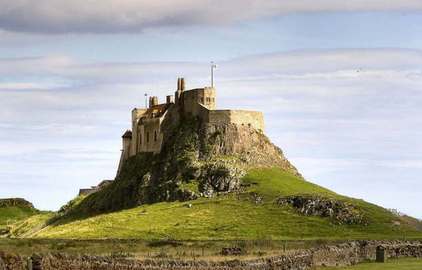Collectors Facts - Lindisfarne (#2240), Sowerby Glass Works
|
Shapes:
Bowl, 8 inches
|
Colours:
Marigold
|
|
Sowerby’s pattern #2240, was first shown in their Pattern Books in 1907 where it was described, quite simply, as number "2240 Bowl". It is about 8 inches wide, and is only known in marigold. It is an exterior pattern.
At first glance, Lindisfarne looks like a plain marigold bowl with no pattern other than ribs or thin panels round the side ... and then you turn it over and wow! It's a little bit like a magic trick. Essentially it is a utilitarian bowl that you wouldn't give a second glance to, until you flip it over and look at the incredible star design on the flat base - see right. The bowl would originally have been made in clear glass and so the beautiful star would have shown through the clear glass and have been seen on the inside. Not so in Carnival Glass, of course! The 8-point star itself is complex and undoubtedly breathtaking. At its heart is a tiny complex hobstar, surrounded by a more intricate, larger hobstar, the whole encased in a square! Around the outer edge, between the eight points, are tiny raised stars that look as if they have been iced on. The icing on the cake, perhaps? And like a frame around the entire magnificent picture, is a ribbed border – the entire design occupying the whole of the flat, wide base. How it got its Carnival pattern name. Back in the late 1990s we undertook a research and study trip (focussed on Sowerby) to Tyneside, in the north east of England, paying special homage to Gateshead, where the Sowerby Ellison factory had been. It was during our time there that we found the lovely bowl illustrated – at the time it had neither been previously reported nor named. |
|
At the end of our visit we spent a day looking at the beauties of the countryside, and we decided to visit a very special place – Lindisfarne Island (also called Holy Island) – and this is what we named the Carnival pattern after. Lindisfarne Island is an ancient holy place of magical beauty that has a recorded history dating back to the 6th century. To get to the island, you follow an ancient pilgrim track from the mainland. It is only accessible at low tide, as at high tide, the sea floods over the track, and Lindisfarne becomes an island once again. Note: readers can reference Lindisfarne in our book “A Century of Carnival Glass” and also on our Volume II and Volume III of our Sowerby CD ebooks. Please note that a “typo” (ooops) crept into Volume II, and although the text is clear and correct, a picture of Lindisfarne accidentally appeared captioned Tyneside Star, which is a different pattern. |
Lindisfarne island. Picture courtesy of Matthew Hunt and Wikipedia.
|
See more Collectors Facts



